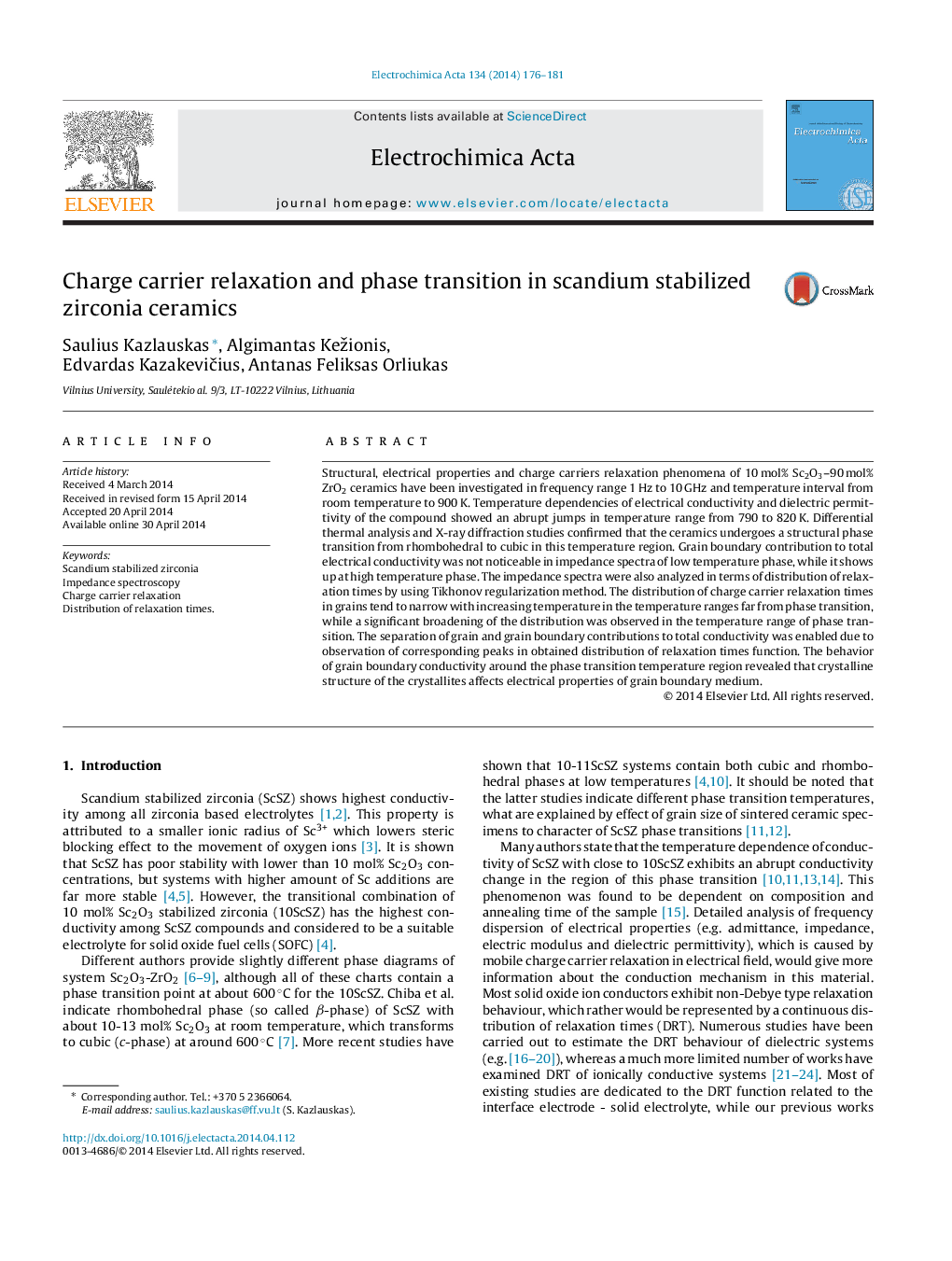| Article ID | Journal | Published Year | Pages | File Type |
|---|---|---|---|---|
| 185659 | Electrochimica Acta | 2014 | 6 Pages |
•Structural and electrical properties of Scandium stabilized zirconia are presented.•Abrupt jumps in electrical properties at phase transition region were revealed.•Impedance spectra were analyzed for finding distribution of relaxation times function.•Temperature behaviour of the distribution of relaxation times was determined.
Structural, electrical properties and charge carriers relaxation phenomena of 10 mol% Sc2O3–90 mol% ZrO2 ceramics have been investigated in frequency range 1 Hz to 10 GHz and temperature interval from room temperature to 900 K. Temperature dependencies of electrical conductivity and dielectric permittivity of the compound showed an abrupt jumps in temperature range from 790 to 820 K. Differential thermal analysis and X-ray diffraction studies confirmed that the ceramics undergoes a structural phase transition from rhombohedral to cubic in this temperature region. Grain boundary contribution to total electrical conductivity was not noticeable in impedance spectra of low temperature phase, while it shows up at high temperature phase. The impedance spectra were also analyzed in terms of distribution of relaxation times by using Tikhonov regularization method. The distribution of charge carrier relaxation times in grains tend to narrow with increasing temperature in the temperature ranges far from phase transition, while a significant broadening of the distribution was observed in the temperature range of phase transition. The separation of grain and grain boundary contributions to total conductivity was enabled due to observation of corresponding peaks in obtained distribution of relaxation times function. The behavior of grain boundary conductivity around the phase transition temperature region revealed that crystalline structure of the crystallites affects electrical properties of grain boundary medium.
